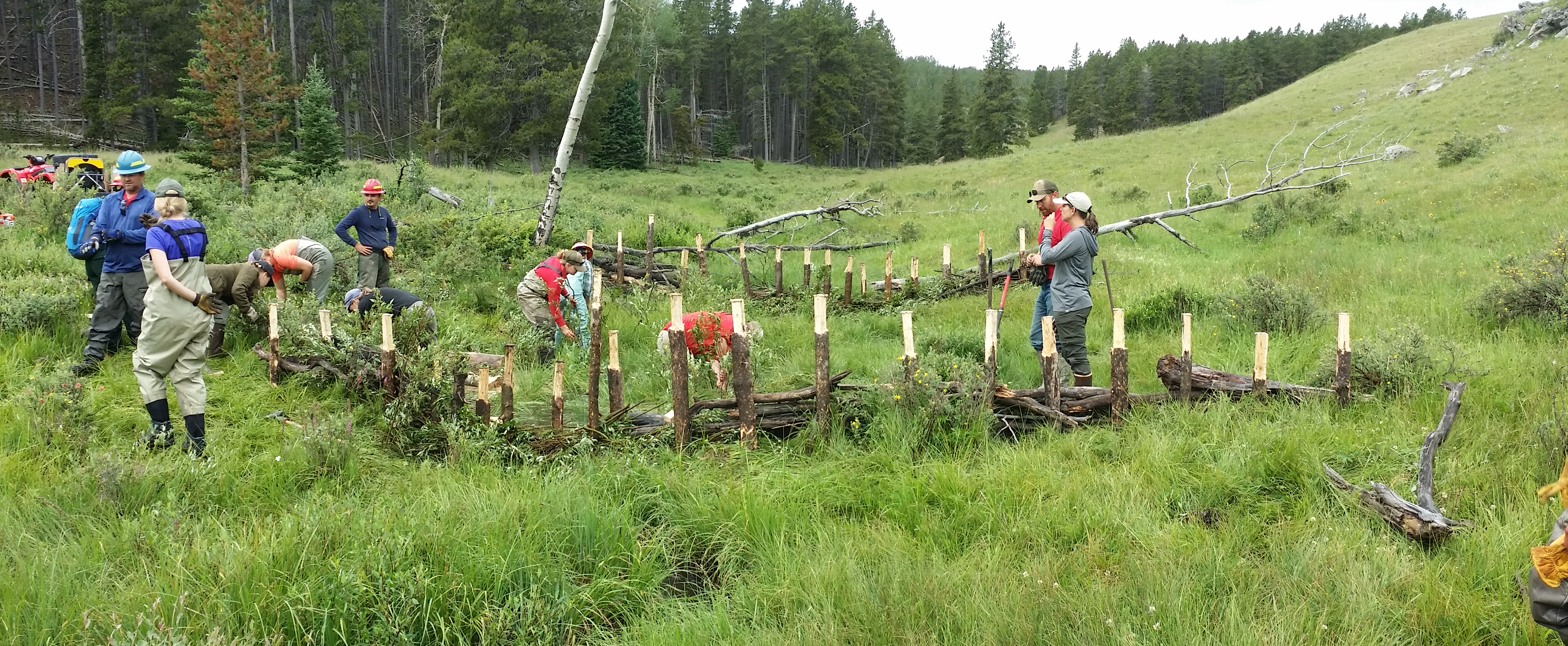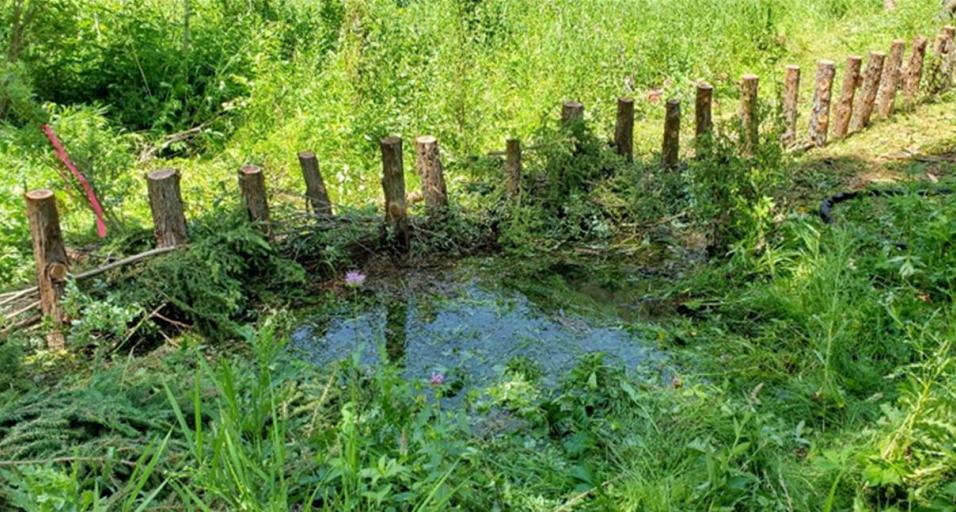Beaver analogs constructed in Sheridan Region
Several Sheridan Region Game and Fish employees, in partnership with Bighorn National Forest personnel, constructed 10 beaver analogs along Grommund and Sourdough creeks west of Buffalo in late July. Beaver analogs are structures created to provide temporary grade control to raise the streamside water table, promote greater riparian vegetation development and entice dam-building by beavers in the project area.
“Analogs are intended to make the area more attractive for beavers and increase riparian-dependent, woody vegetation such as willow,” said Travis Cundy, aquatic habitat biologist for Sheridan Region. “Our hope is we detain water on the land longer and get more riparian habitat acreage in the long run.”
The structures are built by installing a line of posts, with a woven lattice of willow branches between them to create a semi-permeable barrier that is also sealed in some areas with sod and mud. The design of the structure is intended to slow - but not stop - the movement of water in small streams, which over time, creates conditions that will hopefully attract beaver to naturally populate the area.

However, in some cases, beaver transplants can take place at analog sites. Previous experience has shown that to be successful and keep beavers in a new area, transplants must involve a mated pair or several members of a family unit, and take place in the fall.
Cundy said when choosing locations for beaver analogs, habitat managers look for sites in high headwaters on public land, on streams that have been depleted and are in need of a boost.
A beaver analog was also constructed in July in cooperation with the Wyoming State Forestry Division on state land on Parmlee Canyon Creek, a small tributary of Stockade Beaver Creek in Weston County.
“Parmlee already has some good aspen and other woody vegetation, so we are trying to create security cover for beaver in the form of a pool with the hope that beaver will naturally locate and use the area in time,” said Cundy. “If not, it is a good potential location for a transplant of beavers in the future.”
“Analogs are intended to make the area more attractive for beavers and increase riparian-dependent, woody vegetation such as willow,” said Travis Cundy, aquatic habitat biologist for Sheridan Region. “Our hope is we detain water on the land longer and get more riparian habitat acreage in the long run.”
The structures are built by installing a line of posts, with a woven lattice of willow branches between them to create a semi-permeable barrier that is also sealed in some areas with sod and mud. The design of the structure is intended to slow - but not stop - the movement of water in small streams, which over time, creates conditions that will hopefully attract beaver to naturally populate the area.
However, in some cases, beaver transplants can take place at analog sites. Previous experience has shown that to be successful and keep beavers in a new area, transplants must involve a mated pair or several members of a family unit, and take place in the fall.
Cundy said when choosing locations for beaver analogs, habitat managers look for sites in high headwaters on public land, on streams that have been depleted and are in need of a boost.
A beaver analog was also constructed in July in cooperation with the Wyoming State Forestry Division on state land on Parmlee Canyon Creek, a small tributary of Stockade Beaver Creek in Weston County.
“Parmlee already has some good aspen and other woody vegetation, so we are trying to create security cover for beaver in the form of a pool with the hope that beaver will naturally locate and use the area in time,” said Cundy. “If not, it is a good potential location for a transplant of beavers in the future.”
3076727418

